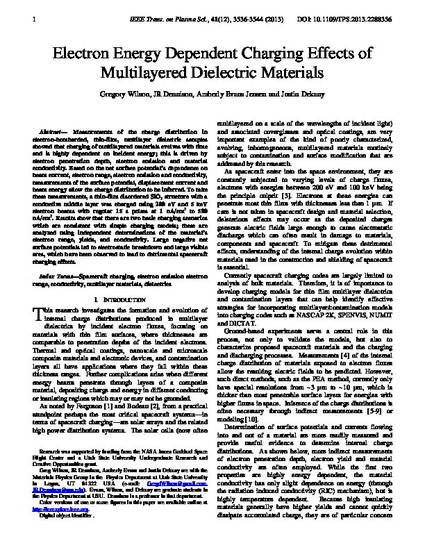
Measurements of the charge distribution in electron-bombarded, thin-film, and multilayer dielectric samples showed that charging of multilayered materials evolves with time and is highly dependent on incident energy; this is driven by electron penetration depth, electron emission, and material conductivity. Based on the net surface potential’s dependence on beam current, electron range, electron emission, and conductivity, measurements of the surface potential, displacement current, and beam energy allow the charge distribution to be inferred. To take these measurements, a thin-film disordered SiO2 structure with a conductive middle layer was charged using 200-eV and 5-keV electron beams with regular 15-s pulses at 1–500 nA/cm2. Results show that there are two basic charging scenarios, which are consistent with simple charging models; these are analyzed using independent determinations of the material’s electron range, yields, and conductivity. Large negative net surface potentials led to electrostatic breakdown and large visible arcs, which have been observed to lead to detrimental spacecraft charging effects.

Published by IEEE in IEEE Transactions on Plasma Science. Author post print is available for download through link above.